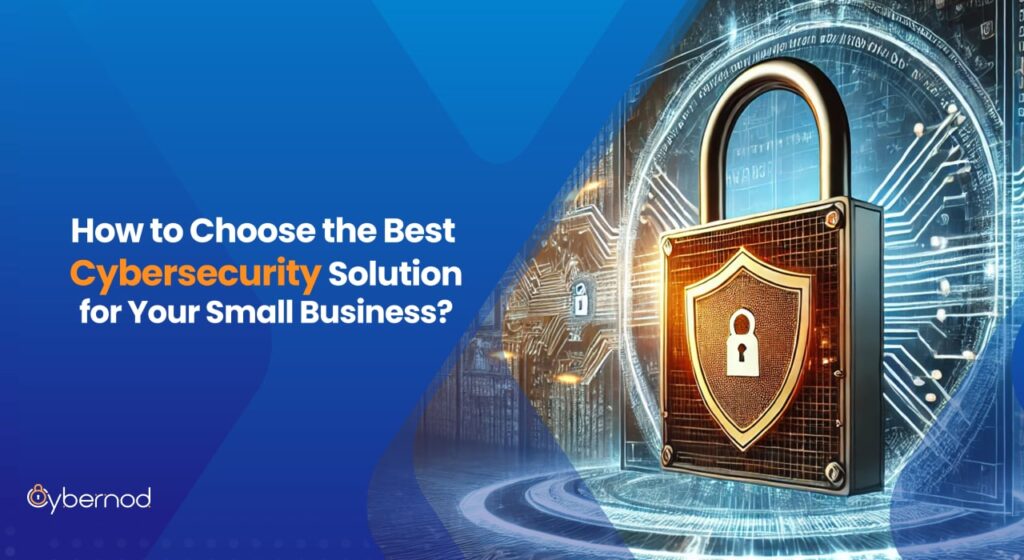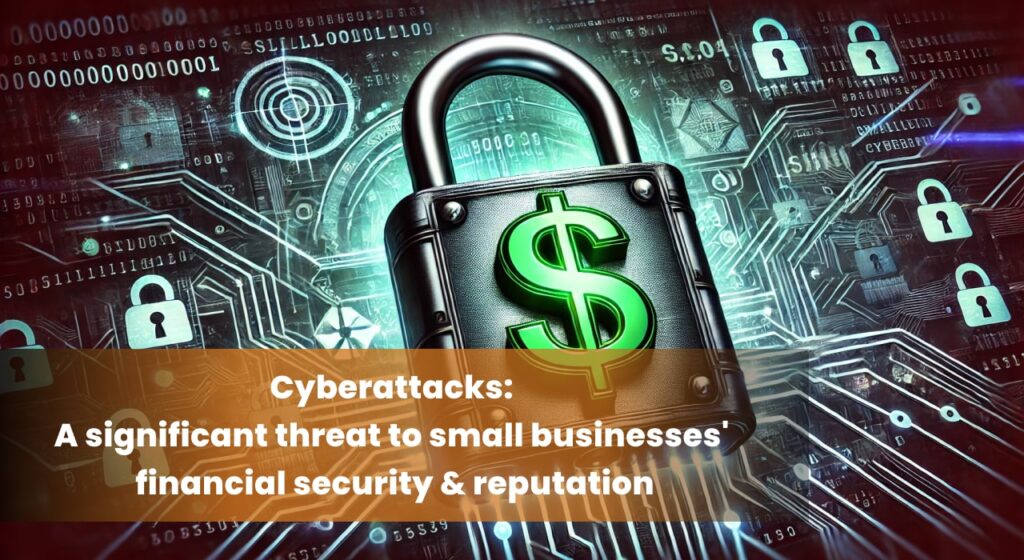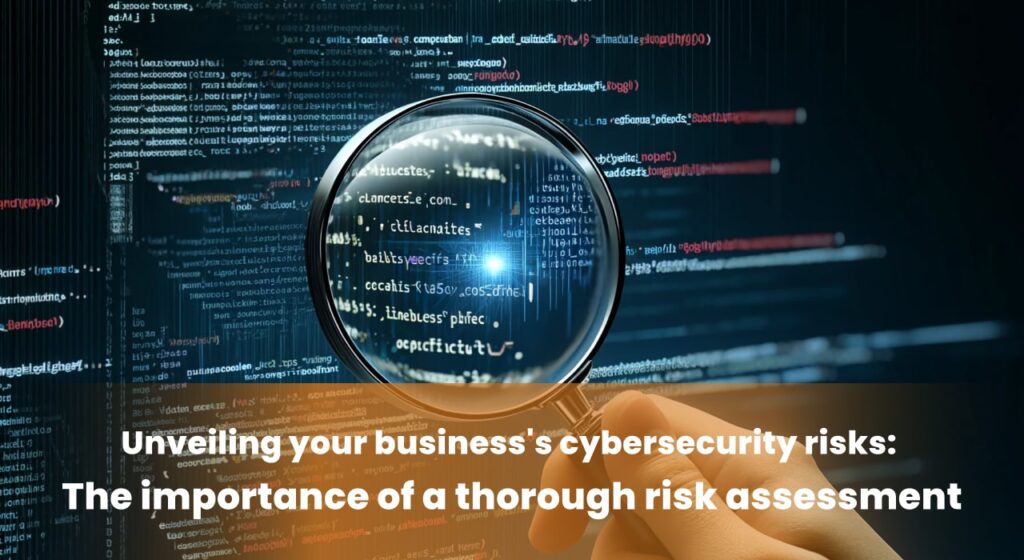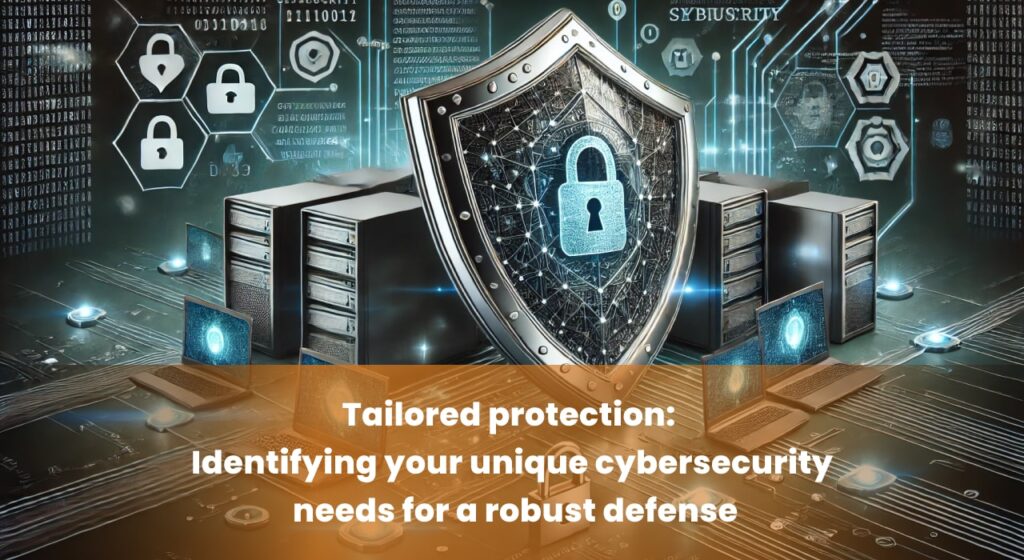
The digital landscape offers a wealth of opportunities for small businesses, but it also presents a growing threat: cyberattacks. In today’s interconnected environment, cybercriminals are constantly devising new methods to exploit vulnerabilities and compromise sensitive data. While headlines often focus on large-scale breaches targeting major corporations, small businesses are increasingly becoming attractive targets due to their perceived weaker defenses.
The severity of this threat is underscored by statistics. According to a 2023 report by the Small Business Administration, nearly half of all cyberattacks target small businesses, resulting in significant financial losses and reputational damage. A single successful attack can cripple a small business, leading to data breaches, operational disruptions, and even closure.
For these reasons, prioritizing cybersecurity is no longer optional for small businesses. Implementing robust security measures is essential to safeguard valuable information, ensure business continuity, and maintain customer trust. This article equips small business owners with the knowledge and tools necessary to navigate the complex world of cybersecurity solutions and select the optimal protection for their unique needs.
Why Cybersecurity Matters for Small Businesses

The misconception that cyberattacks solely target large corporations is a fallacy. In reality, small businesses have become a prime target for cybercriminals due to several factors. Often lacking the comprehensive security measures deployed by larger enterprises, small businesses present a more accessible entry point for attackers. Furthermore, the valuable data they possess, such as customer information and financial records, can be highly lucrative for cybercriminals.
Statistics paint a concerning picture. According to a 2023 report by the Small Business Administration (SBA), a staggering 43% of all cyberattacks target small businesses. This translates to a significant threat landscape for millions of businesses, highlighting the critical need for cybersecurity for small business.
The consequences of a successful cyberattack can be devastating for a small business. Financial losses can be substantial, encompassing costs associated with data recovery, remediation efforts, and potential legal liabilities. Furthermore, a data breach can severely damage a business’s reputation, eroding customer trust and hindering future growth. The impact can be particularly detrimental for businesses operating in industries where data security is paramount, such as healthcare or financial services.
Investing in cybersecurity for businesses, particularly a cybersecurity assessment or a security gap analysis, is no longer a discretionary expense, but a fundamental investment in business continuity and resilience. By proactively identifying vulnerabilities and implementing robust security measures, small businesses can significantly reduce their attack surface and protect their critical assets.
The cost of such breaches can be significant. According to the 2023 IBM Cost of a Data Breach Report, the average cost for a data breach involving a small business is a staggering $2.9 million. This financial burden can cripple a small business, potentially leading to layoffs or even closure. Beyond the financial impact, data breaches can inflict serious reputational damage. Customers entrust small businesses with their personal information, and a breach can erode that trust. Negative publicity and customer churn can have a lasting impact on a small business’s ability to operate and grow. Furthermore, depending on the type of data compromised, legal ramifications can arise. Regulations like the General Data Protection Regulation (GDPR) and the Health Insurance Portability and Accountability Act (HIPAA) impose strict data security requirements and hefty fines for non-compliance. By neglecting cybersecurity, small businesses expose themselves to a multitude of risks that can threaten their very existence.
To help small businesses effectively manage their cybersecurity risks and protect their valuable assets within their budget constraints, we’ve developed a comprehensive guide: [Choosing the Best Cyber Security Solutions for Small Business Budgets].This in-depth resource provides practical strategies for identifying cybersecurity needs, evaluating cost-effective solutions, and implementing a robust security posture that aligns with your business’s unique requirements.
Conducting a Cybersecurity Risk Assessment

Before embarking on the journey of selecting a cybersecurity solution, it’s crucial to understand your business’s unique vulnerabilities. This is where a cybersecurity risk assessment comes into play. It’s a systematic process that identifies, analyzes, and prioritizes potential threats to your critical assets, providing valuable insights to inform your security strategy.
Think of a cybersecurity risk assessment as a roadmap. By understanding your vulnerabilities and the potential impact of a cyberattack, you can make informed decisions about the security measures needed to protect your data and systems. This targeted approach ensures you invest in solutions that address your specific risks, maximizing the effectiveness of your cybersecurity posture.
Here’s a breakdown of the key steps involved in conducting a cybersecurity risk assessment, depicted in the accompanying flowchart:
- Identify Assets: The first step involves comprehensively identifying all your valuable assets. This includes tangible assets like computers and servers, as well as intangible assets like customer data, financial records, and intellectual property.
- Identify Vulnerabilities: Once you’ve identified your assets, the next step is to analyze them for potential weaknesses or security gaps. This could involve outdated software, insecure configurations, or inadequate access controls.
- Identify Threats: With your assets and vulnerabilities mapped, it’s time to consider the potential threats that could exploit them. This includes common threats like malware, phishing attacks, and unauthorized access attempts.
- Likelihood and Impact: Now it’s time to assess the likelihood of each threat occurring and the potential impact it could have on your business. Consider factors such as the ease of exploitation for a particular vulnerability and the criticality of the affected asset.
- Risk Prioritization: By combining the likelihood and impact of each threat, you can prioritize the risks your business faces. This allows you to focus your resources on addressing the most critical vulnerabilities first.

Benefits of a Cybersecurity Risk Assessment:
- Improved Decision-Making: By providing a clear picture of your risk landscape, a risk assessment empowers you to make informed decisions regarding security investments.
- Resource Optimization: By prioritizing risks, you can allocate resources efficiently, focusing on the areas that need the most attention.
- Enhanced Security Posture: Addressing identified vulnerabilities strengthens your overall security posture, making it more difficult for attackers to succeed.
- Compliance: Risk assessments can help ensure compliance with relevant industry regulations and data security standards.
By conducting a thorough cybersecurity risk assessment, you lay the groundwork for selecting the most appropriate cybersecurity solution for your small business. In the next section, we’ll explore the process of identifying your specific cybersecurity needs.
Identifying Your Cybersecurity Needs

The outcome of your cybersecurity risk assessment will illuminate the specific vulnerabilities and threats your business faces. With this knowledge in hand, you can effectively identify your most critical cybersecurity needs. These needs will form the foundation for selecting the optimal cybersecurity solution.
Several fundamental security measures are essential for most small businesses. The following table outlines some common needs and their significance:
| Cybersecurity Need | Purpose | Importance |
|---|---|---|
| Data Encryption | Renders sensitive data unreadable to unauthorized users in case of a breach. | Protects customer information, financial records, and intellectual property. |
| Access Controls | Limits access to sensitive data and systems based on user roles and permissions. | Prevents unauthorized access and minimizes potential damage from insider threats. |
| Firewalls | Acts as a barrier between your internal network and the external internet, filtering incoming and outgoing traffic. | Shields your network from malicious attacks and data exfiltration attempts. |
| Antivirus and Anti-Malware Software | Detects, quarantines, and removes malicious software from your devices. | Protects your systems from viruses, worms, ransomware, and other cyber threats. |
| Employee Training | Educates employees on cybersecurity best practices, including password hygiene, phishing awareness, and secure browsing habits. | Empowers employees to become the first line of defense against cyberattacks. |
These represent a foundational set of needs, but your specific requirements may vary depending on the findings of your risk assessment and the nature of your business. For instance, businesses that handle sensitive customer data, such as healthcare providers or financial institutions, might require additional security measures like intrusion detection systems or data loss prevention (DLP) solutions.
By understanding your unique cybersecurity needs, you can select a solution that provides the most comprehensive protection for your assets and effectively mitigates the identified risks.
Evaluating Cybersecurity Solutions

With your cybersecurity needs clearly defined, you can now navigate the landscape of available solutions. The marketplace offers a diverse range of options, each tailored to address specific requirements. Understanding the different types of solutions and their functionalities is crucial for selecting the optimal fit for your small business.
Antivirus and Anti-Malware Software: This foundational layer of protection safeguards individual devices from malicious software like viruses, worms, and ransomware. These solutions typically offer real-time scanning, automatic updates, and basic threat detection capabilities. While essential, they may not provide comprehensive protection against advanced cyberattacks.
Endpoint Protection Platforms (EPPs): EPPs offer a more holistic approach to endpoint security, encompassing features beyond traditional antivirus software. They typically include functionalities like application control, intrusion detection and prevention, and device encryption. EPPs are well-suited for businesses requiring a more layered defense against evolving cyber threats.
Managed Security Services (MSS): For businesses lacking the in-house expertise or resources to manage their own security infrastructure, MSS can be a valuable option. MSS providers offer a range of services, including threat monitoring, incident response, and ongoing security management. This allows businesses to leverage the expertise of security specialists without the burden of maintaining a dedicated security team.
Firewalls: Firewalls act as a gatekeeper between your internal network and the external world, filtering incoming and outgoing traffic. They can be implemented as hardware or software solutions and are essential for safeguarding your network from unauthorized access and malicious attacks.
When evaluating cybersecurity solutions, consider the following key features:
- Threat Detection and Prevention Capabilities: The solution should effectively identify and mitigate a wide range of cyber threats, including malware, phishing attempts, and zero-day attacks.
- Scalability: As your business grows, your security needs will evolve. Choose a solution that can scale to accommodate your expanding security requirements.
- Ease of Use: The solution should be user-friendly and manageable for your internal IT team, or readily supported by a managed security provider if outsourced.
- Integration Capabilities: Ensure the solution integrates seamlessly with your existing IT infrastructure, minimizing disruption and maximizing efficiency.
By thoroughly evaluating these factors and aligning them with your identified needs, you can select a cybersecurity solution that effectively protects your valuable assets and fosters a secure digital environment for your small business.
Additional Considerations
While identifying the right features is crucial, the selection process doesn’t end there. Several additional factors warrant consideration before making your final decision.
Scalability: Your business is likely to evolve over time, and your cybersecurity needs will inevitably grow alongside it. Choose a solution that can scale seamlessly to accommodate future security requirements. This ensures your chosen solution remains effective as your business expands its data storage, user base, or operational complexity.
User-friendliness: The user interface of your chosen solution should be intuitive and manageable for your internal IT team. If lacking dedicated IT staff, consider solutions offering robust customer support or the option of outsourcing management to an Managed Security Service Provider (MSS). A user-friendly solution minimizes disruption to your workflow and ensures effective utilization of its features.
Customer Support: Reliable and responsive customer support is an invaluable asset. Technical difficulties or security incidents can arise unexpectedly, and timely assistance from the vendor can significantly reduce downtime and mitigate potential damages. Prioritize solutions with robust customer support channels, ensuring you have access to expert assistance when needed.
Cost: Cybersecurity solutions range in price depending on the offered features and level of service. While cost is a significant factor, it’s important to view cybersecurity as an investment in your business’s resilience. The potential financial losses and reputational damage resulting from a successful cyberattack can far outweigh the cost of implementing robust security measures.
By carefully considering these additional factors alongside your identified needs, you can select a cybersecurity solution that delivers optimal protection at a sustainable cost for your small business.
Choosing the optimal cybersecurity solution for your small business requires a multi-faceted approach. By conducting a thorough cybersecurity risk assessment, identifying your specific needs, and evaluating solutions based on features, scalability, and user-friendliness, you can select the best defense against cyber threats. Remember, cybersecurity is an ongoing process. Regular updates, employee training, and staying informed about evolving threats are crucial for maintaining a robust security posture and safeguarding your valuable assets.
Categorized in:
Comments